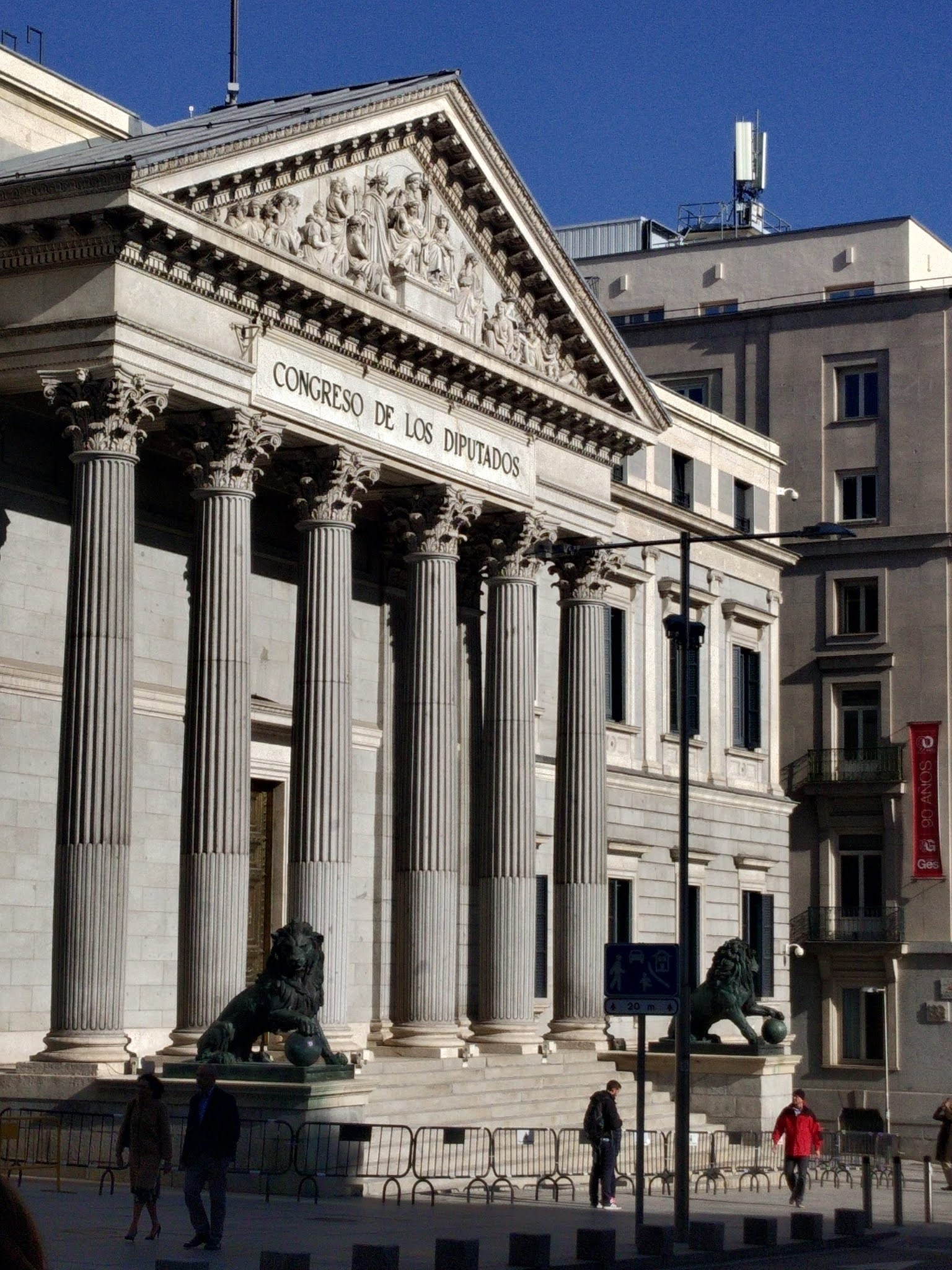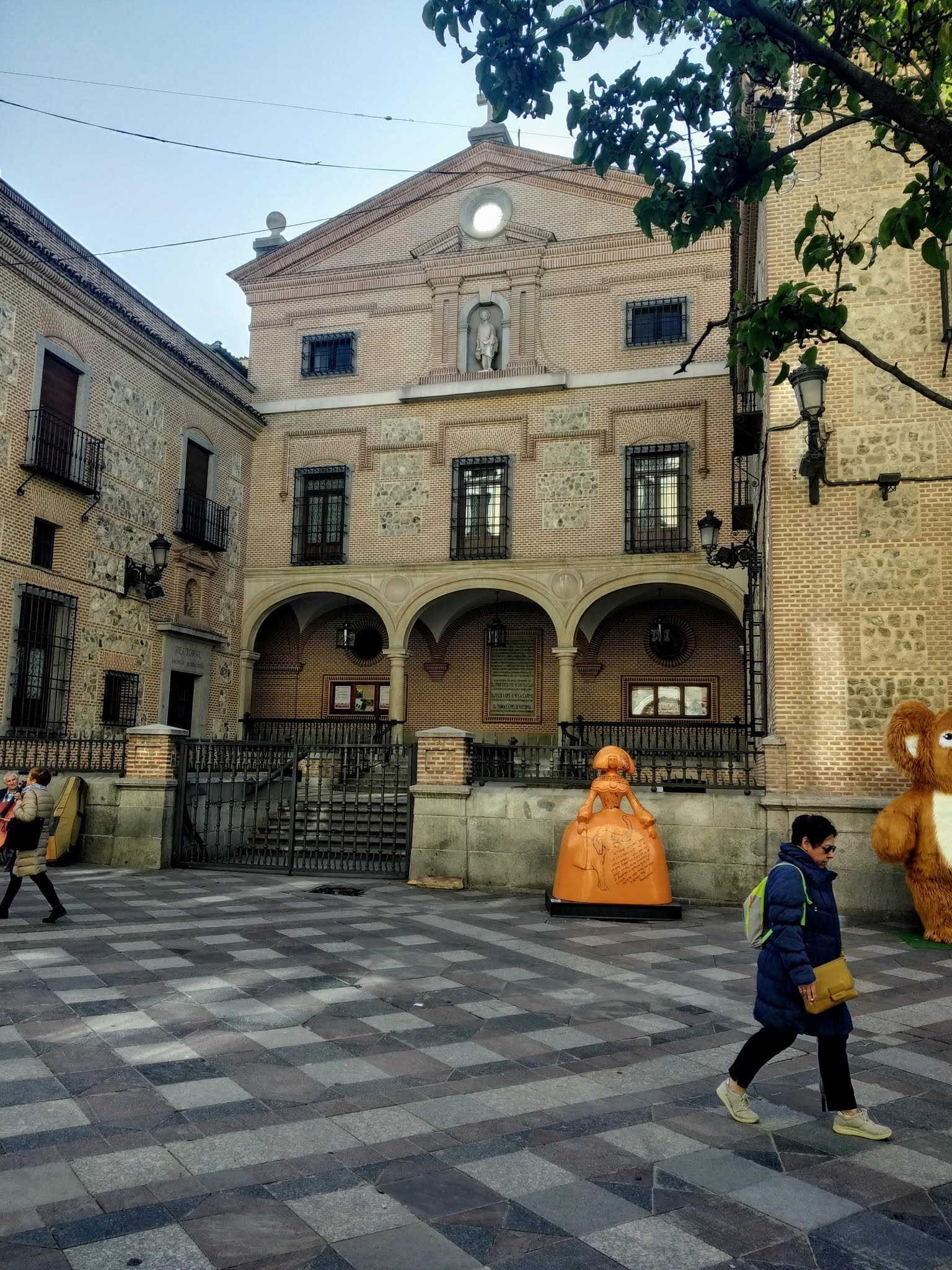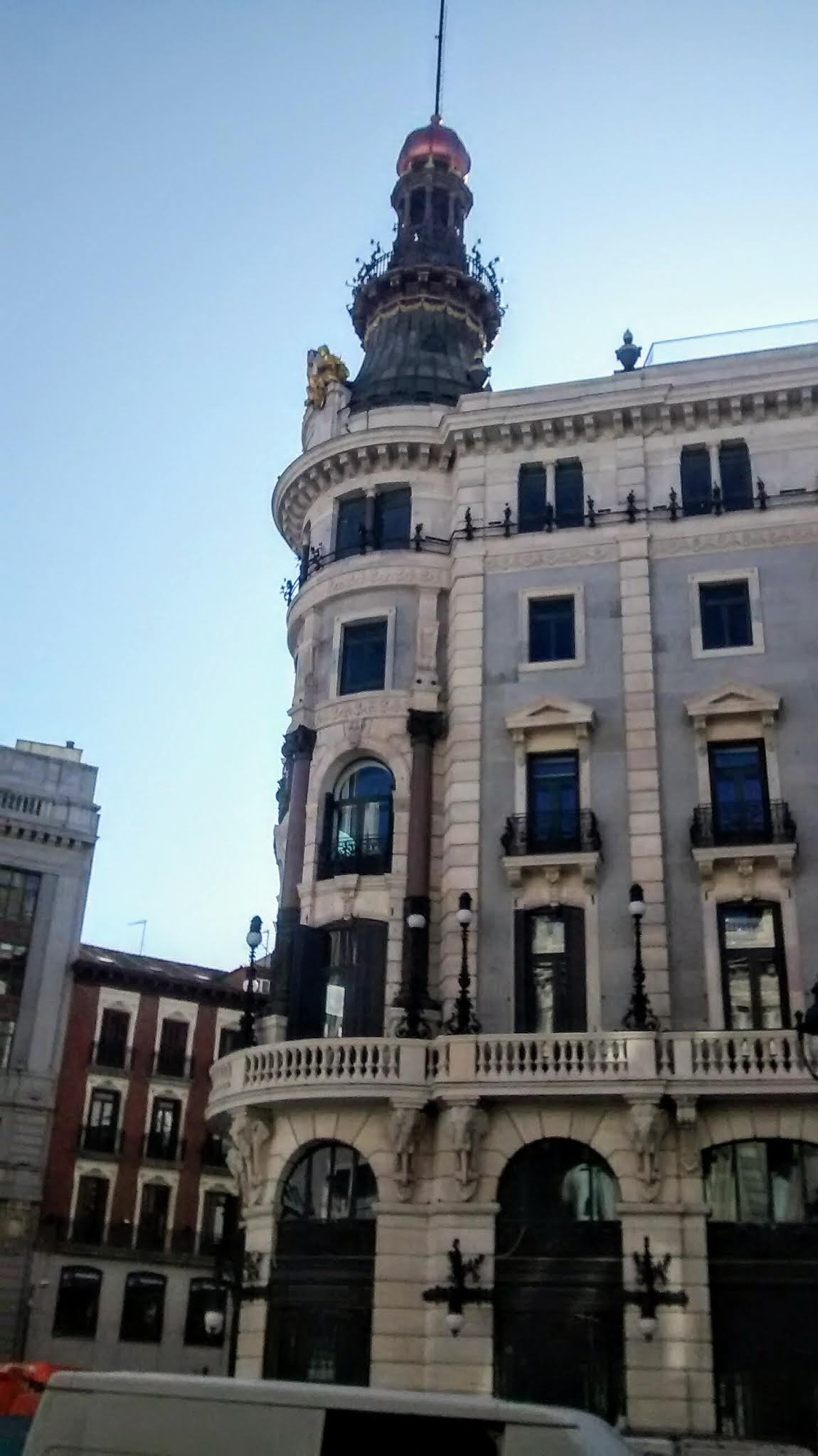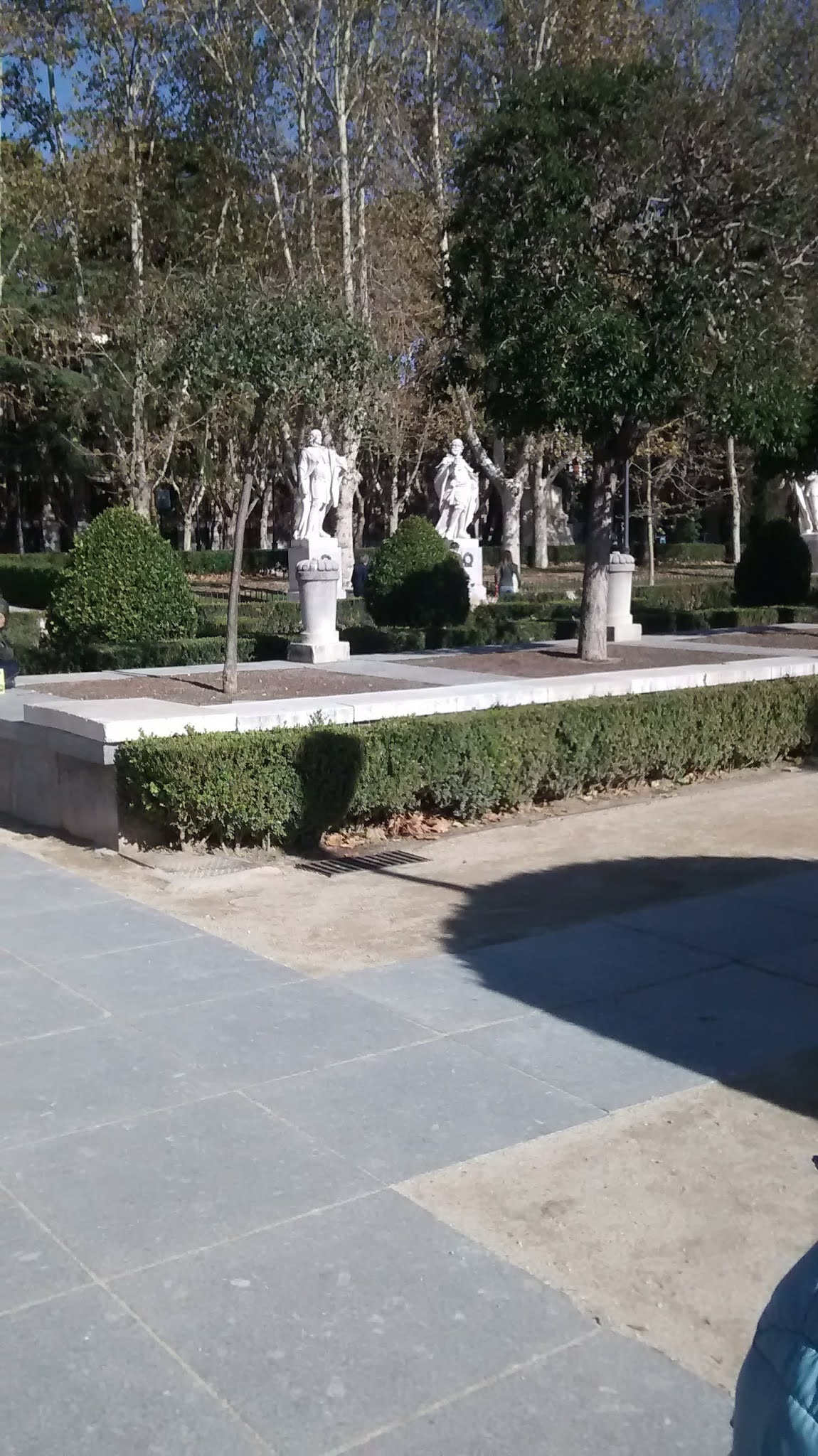Madrid - the Royal Spanish Capital
Nico and Eva. A lovely Spanish couple from Madrid. Nico is a
banker and takes care of their apartment in Madrid. His wife Eva mostly takes
care of their apartment at Tenerife Island, but she is impeccably
superb as a hostess. Unfortunately, we could not meet her during our visit to
Madrid. But she made it a point to coordinate our visit and stay from her
WhatsApp handles. After receiving our arrival details, she sent a carefully
worded text which included a way to the public transport terminus after alighting
from the ALSA bus at its terminal station. Many a time I fall prey to my impatient nature. In this case, I
overlooked the word ‘escalators’ mentioned by Eva. We took the escalator which
connected the platform to the concourse. Once at the concourse we felt lost,
not knowing where to get our bus from. Since my wife knows Spanish, she got
help from the locals. At the opposite end, there were a series of ‘escalators’
as well as a lift which takes you to the exit at level 5. The public transport terminus
was just outside the exit gate. The bus line mentioned by Eva was waiting
there as if it had drawn up at the terminus for us. The apartment was situated
in a classy complex. We were ushered in by a young Argentinean couple who were
also staying as guests in one of the rooms in Eva’s apartment. We were given a
pretty room with an attached bath. Plus a well-equipped common kitchen adjoining
our room and a beautiful garden. A beautiful note at the bedside table
welcoming us. As Madrid remained quite chilly and windy in November, the
coziness of the room brought a feeling of warmth to our hearts. Apart from a
well-equipped kitchen and a nice garden adjoining it, the most exciting part of
our stay was a highly efficient public transport operating from a bus stop
located right outside the complex gate. Route no. 20 from Pavone to Sol-Seville
plying almost at every ten minutes frequency was the most exciting part of our
Madrid sojourn.
Sol-Seville is the heart of Madrid. Crowded, like Calcutta’s
Esplanade. Over and above, a huge traffic snarl as the left flank of the road
was blocked due to some massive construction work (a very common sight at most of the cities in India). We, therefore, used to get down near Seville
metro station and walk down to the large square. On the right of the square, a
road leads to the Palace through a busy market. Palacio Real de Madrid is about
20 minutes walk from Sol via Calle del Arenal. We walked on with nonchalant
abandon. Savoring the tempting displays at food counters, the sight of an old
cinema hall with posters displaying the current movies shown there, the
majestic façade of the nineteenth century Teatro Real Opera House, or otherwise
desultory streetscape. When we finally arrived at the Royal Palace (Palacio
Real de Madrid) a
stunningly wide façade opened up. Bemused by the exterior architecture of the
eighteenth-century palace, so vast that it put us on momentary doldrums as to where to start from. Later on, I learned that the palace is the largest in Europe
and has about 3500 rooms. Instead of
seeing the interiors which would have taken the entire day, I preferred to
stroll across the beautiful gardens outside the palace.
Prado Museum (Museo National del Prado in Spanish) Built in
the early nineteenth century, it houses the world’s finest collections of European
art chronicled from the twelfth century to the early twentieth century. The
museum is a real treasure trove for aspiring artists. The museum spaces are
shared by works of great European artists like Raphael’s ‘Sagrada Familia’,
‘the Visitation’, ‘Christ Falls on the route to Calvary’, ‘Portrait of a
Cardinal’. I have seen his artwork in Sistine Chapel at the Vatican. His ability to
paint people more real than they are was his forte. Tiziano’s oil on canvas
such as ‘Christ carrying the Cross’, ‘Adam & Eve’. ‘Adam trying to prevent
Eve’s action’ by Ruben. Tintoretto’s famous canvas exalts humility and
brotherly love through the scene of Jesus washing his disciples’ feet in the
last supper. The galleries had an impressive display of paintings of Ribera, Durer,
Titian, Tiziana, Diego Velazquez, Goya, El Greco, Joven, and Verone. An
exclusive space for the sixteenth-century Italian paintings by Titian who was a
great exponent of sensuality. Even paintings of two women painters of sixteenth-century Sofonisba and Lavonia Fontana have been displayed. Despite skepticism regarding
female artists’ creative capacities during that period, broke away from social
stereotypes and produced great portraits, religious and even mythological compositions.
The museum holds drawings by the early nineteenth-century artist Francisco de
Goya. His themes were portraits of man’s usually violent nature, men’s violence
to women, the misogynistic concept of women as solely existing for men’s
pleasure.
Finally, we had a look at the gallery for sculptures. Jose
Alvarez Cubero’s ‘The Defence of Zaragoza’ is worth mentioning. This celebrated sculptor was imprisoned in 1808 for refusing to accept Napoleon’s brother Joseph Bonaparte as King
of Spain, after the siege of the city of Zaragoza by the French troops during the
Peninsular War.
The museum also houses a well-stocked library where one can
order print out of a painting. We also had an order from Latika, our friend and
neighbor back in Calcutta. She also learned Spanish with Ruby (my wife). The
order was for ‘Las Meninas, a painting by Velazquez. A warm and cozy coffee
break at Prado Café was another refreshing part of our museum visit.
 |
| Nico & Eva welcomes us to their cozy room |
 |
| Nico's apartment in Madrid |
 |
| Madrid |
 |
| Sol-Seville-the heart of Madrid |
.
Booking.com

















Comments